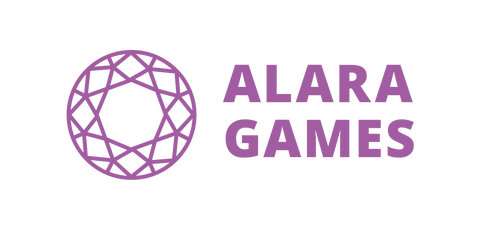-
Board Games
-
Magic the Gathering
- Singles
- Deck Builder
- SELL YOUR CARDS
- Pre-Orders
- Booster Packs
- Booster Boxes
- Bundles
- Preconstructed Decks
- Other Products
Pokémon
- Shrouded Fable
- Pre-Orders
- Booster Packs
- Booster Boxes
- Preconstructed Decks
- Tins/Boxes
- Elite Trainer Boxes
- Accessories
Lorcana
Digimon TCG
YU-GI-OH!
My Hero Academia
Flesh and Blood
Cardfight!! Vanguard
Other
-
Binders
Deck boxes
Dice
Sleeves
Storage
-
Paints
- Paint Sets
- Game Colors
- Model Colors
- Model Air
- Mecha Colors
- Xpress Color
- Metal Colors
- Auxiliarie Paint
- Spray Cans
- Surface Primers
- Panel Liners
- Contrast Color
Airbrush
Brushes
Scenery
Puzzle
-
Apparel
Figures
Other
-
Warhammer 40k
Warhammer Age of Sigmar
Marvel Crisis Protocol
Warhammer Underworlds
The Horus Heresy
Kill Team
Dice
Other
-
Dice
Accessories
Game Systems
-
Bloggs
-
-
-
-
-
-
-
-
-
-
-
-
-
-
-
-
-
-
-
-
-
-
-
-
-
-
-
-
-
-
-
-
-
-
topPatchwork (Nordic)
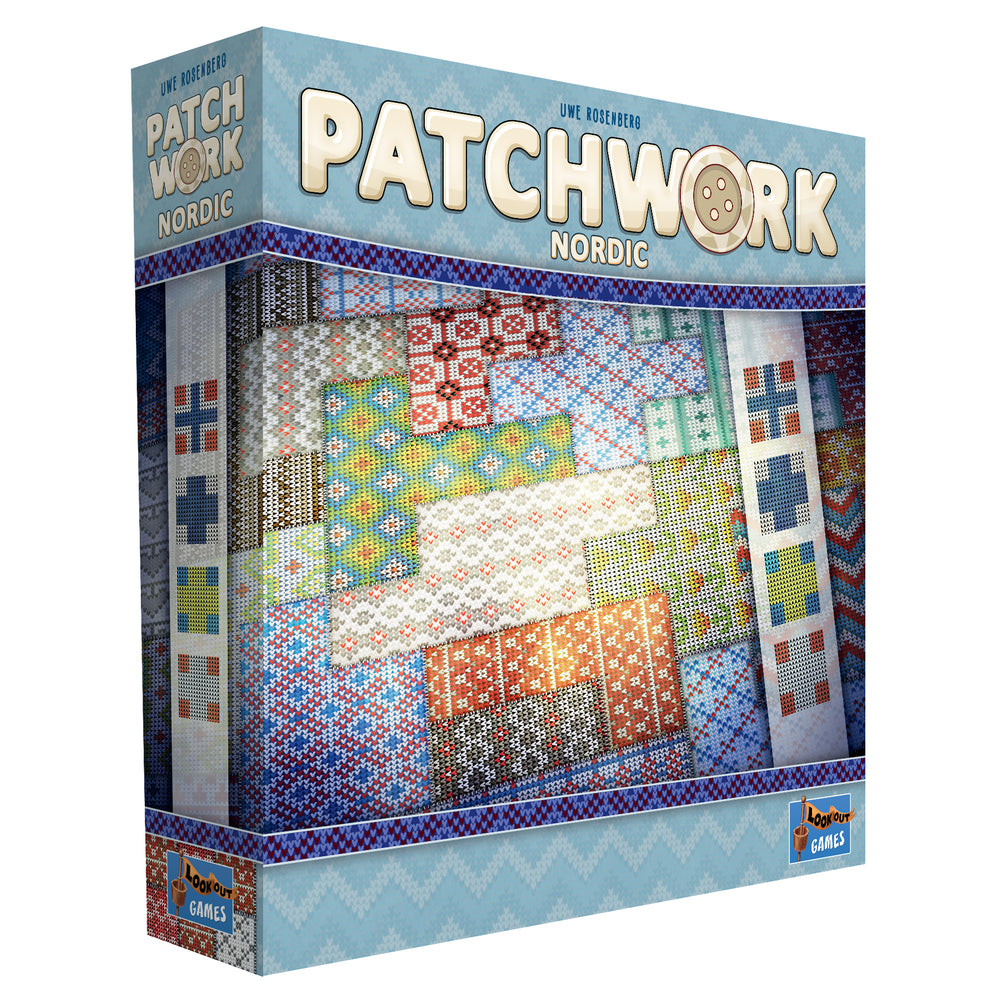
Patchwork (Nordic)
Regular Price 299,00 krHurry! Only3units left in stock!Patchwork
Family Game - Abstract Strategy Game - Two-Player Game
Recommendations:
Players: 2
Age: 8+
Duration: 30 minIn Patchwork, two players compete to build the most aesthetic (and high-scoring) patchwork quilt on a personal 9x9 game board. To start play, lay out all of the patches at random in a circle and place a marker directly clockwise of the 2-1 patch. Each player takes five buttons — the currency/points in the game — and someone is chosen as the start player.
On a turn, a player either purchases one of the three patches standing clockwise of the spool or passes. To purchase a patch, you pay the cost in buttons shown on the patch, move the spool to that patch's location in the circle, add the patch to your game board, then advance your time token on the time track a number of spaces equal to the time shown on the patch. You're free to place the patch anywhere on your board that doesn't overlap other patches, but you probably want to fit things together as tightly as possible. If your time token is behind or on top of the other player's time token, then you take another turn; otherwise the opponent now goes. Instead of purchasing a patch, you can choose to pass; to do this, you move your time token to the space immediately in front of the opponent's time token, then take one button from the bank for each space you moved.
In addition to a button cost and time cost, each patch also features 0-3 buttons, and when you move your time token past a button on the time track, you earn "button income": sum the number of buttons depicted on your personal game board, then take this many buttons from the bank.
What's more, the time track depicts five 1x1 patches on it, and during set-up you place five actual 1x1 patches on these spaces. Whoever first passes a patch on the time track claims this patch and immediately places it on his game board.
Additionally, the first player to completely fill in a 7x7 square on his game board earns a bonus tile worth 7 extra points at the end of the game. (Of course, this doesn't happen in every game.)
When a player takes an action that moves his time token to the central square of the time track, he takes one final button income from the bank. Once both players are in the center, the game ends and scoring takes place. Each player scores one point per button in his possession, then loses two points for each empty square on his game board. Scores can be negative. The player with the most points wins.
AWARDS & HONORS
- 2017 Guldbrikken Best Family Game Nominee
- 2017 Årets Spill Best Family Game Nominee
- 2017 Årets Spel Best Family Game Winner
- 2016 Lys Grand Public Finalist
- 2016 Juego del Año Finalist
- 2016 International Gamers Award - General Strategy: Two-players Nominee
- 2016 Gra Roku Game of the Year Nominee
- 2015 Spiel des Jahres Recommended
- 2015 Spiel der Spiele Special Prize Winner
- 2015 International Gamers Award - General Strategy: Two-players Nominee
- 2015 Hungarian Board Game Award Nominee
- 2015 Hra roku Recommended
- 2014 Meeples' Choice Nominee
- 2014 Golden Geek Best Abstract Board Game Winner
- 2014 Golden Geek Best Abstract Board Game Nominee
- 2014 Golden Geek Best 2-Player Board Game Nominee
Added To Cart :Add To Cart Failed :prouduct successfully added to wishlist !Alara Grading Guide
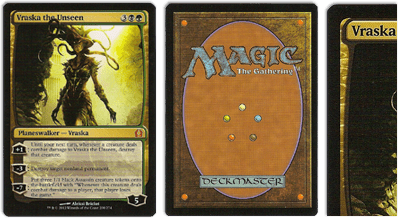 ''
''Near Mint (NM)'
Near Mint condition cards show minimal or no wear from play or handling and will have an unmarked surface, crisp corners, and otherwise pristine edges outside of minimal handling. Near Mint condition cards appear 'fresh out of the pack,' with edges and surfaces virtually free from all flaws. '
'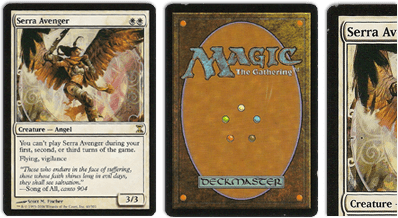 ''
''Lightly Played (LP)'
Lightly Played condition cards can have slight border or corner wear, or possibly minor scratches. No major defects are present, and there are less than 4 total flaws on the card. Lightly Played condition foils may have slight fading or indications of wear on the card face. '
' ''
''Moderately Played (MP)'
Moderately Played condition cards have moderate wear, or flaws apparent to the naked eye. Moderately Played condition cards can show moderate border wear, mild corner wear, water damage, scratches , creases or fading, light dirt buildup, or any combination of these defects. '
' ''
''Heavily Played (HP)'
Heavily Played condition cards exhibit signs of heavy wear. Heavily Played condition cards may include cards that have significant creasing, folding, severe water damage, heavy whitening, heavy border wear, and /or tearing. '
''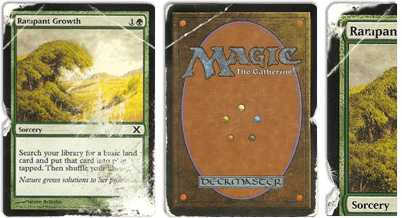 ''
''Damaged (D)'
Damaged condition cards show obvious tears, bends, or creases that could make the card illegal for tournament play, even when sleeved. Damaged condition cards have massive border wear, possible writing or major inking (ex. white-bordered cards with black-markered front borders), massive corner wear, prevalent scratching, folds, creases or tears. '
'
